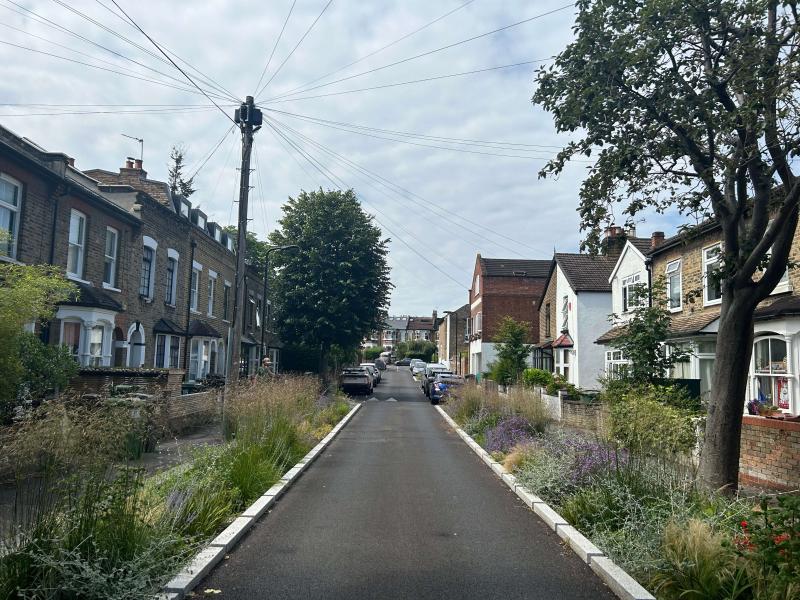
Meristem Design: Esther Road Rain Gardens
Accredited Contractor, Meristem Design's project Esther Road, like many urban streets, faced the challenge of flooding during heavy rains in 2021. With climate change projections indicating wetter conditions in the UK, it became clear that they needed innovative, localised solutions. The Esther Road Rain Gardens emerged as a response, not only to mitigate floods but to transform urban spaces into resilient, sustainable ecosystems.
What sets Esther Road apart is the innovative repurposing of parking spaces on both sides of the street into Sustainable Drainage Systems (SuDS) features, commonly known as Rain Gardens. Biophilic design principles guide the layout of the rain gardens. Kerbs, retaining the adjacent carriageway, create a functional and visually appealing space. Concrete backing, adorned with stones, not only enhances aesthetics but also plays a crucial role in managing water energy.
We've planted a total of 83m2 of Rain Garden beds, spanning three distinct areas, with more than 550 beautiful plants.
The community's role in initiating and driving this project cannot be overstated. Esther Road Rain Gardens are not imposed but rather embraced by residents who share a vision of resilience and sustainability. Their feedback during the planting phase indicates a positive shift, with rainwater no longer pooling but being effectively managed as intended.
We've received countless positive comments from the community, and we're deeply grateful for their support. Together, we're proving that small-scale, localised interventions like Rain Gardens are the way forward in creating a more sustainable and resilient future. The initiative goes beyond landscaping; it's an inspiring example of community resilience, sustainable urban planning, and environmental stewardship.
Transforming Parking Spaces into Rain Gardens
The project, covering three streets in the area, strategically places 82.5m2 of rain gardens along Esther Road, turning previously mundane car parking sections into Rain Gardens. The Rain Gardens are situated at the lowest point of the road, with the road sloping up and away from the rain gardens in either direction, creating a bowl-like situation. A similar planting palette was used to Brooke road, utilising a variety of hardy, drought tolerant species, that will also cope well with some inevitable flood events that the road will experience in the future.
Within the project, chamber covers have been integrated, along with distinctive red domes serving as overflow mechanisms, featuring downward-extending pipes. While the designs may vary, the fundamental structure of our rain gardens involves water entering at the surface, permeating the soil, and traversing through a specifically graded stone layer into the ground itself.
The stone layer, intentionally designed with 30% voids, is utilised as a reservoir for floodwater storage. In cases where the volume of water surpasses the surrounding soil's absorption capacity, the stone layer is filled up first, followed by the soil layer. Eventually, any excess water is allowed to overflow into the sewer system.
To optimise drainage, the soil layer is carefully selected to be free-draining. Intriguingly, the rain gardens are curated to host plants resilient enough to endure prolonged dry spells, ensuring the success of our sustainable and flood-resistant project.
Innovative technologies, like "SuperDrain," a porous carriageway allowing water to drain through the asphalt surface, complement the rain gardens. The rebuilt substructure with stone layers demonstrates how existing urban spaces can adapt to persistent problems.
Beyond rain gardens, the project includes a trial of Rainwater SuDS Planters for households, demonstrating a holistic approach to diverting water from the sewers. Esther Road became a living example of a cost-effective, diffuse solution applicable to various urban areas, building resilience against climate change. As the rain gardens continue to burst into colour and life, each plant becomes an example of our commitment to fostering biodiversity and creating vibrant green spaces.
Stay tuned as we revisit Esther Road, eager to witness how this community-led initiative continues to flourish, nurturing nature in the heart of Waltham Forest.
